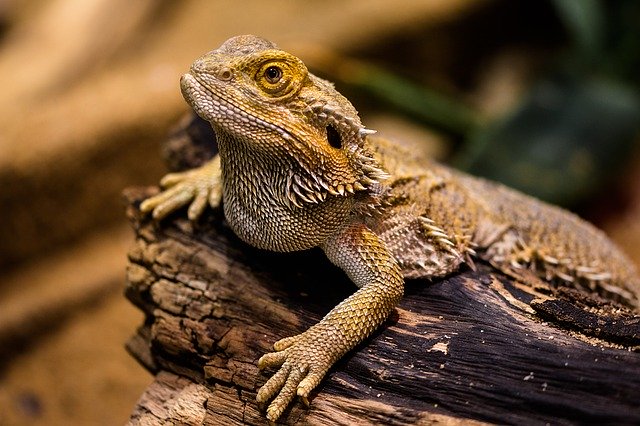
A bearded dragon (Pogona vitticeps) is a reptile originating from the semidesert regions and woodlands of Australia. Its broad, triangular head and throat with spiny scales arranged in rows like a beard, make it unique from other lizards. These spiny scales are not so sharp but expand when the animal is threatened to scare off predators.
This lizard is known for its calm and friendly nature, which explains its popularity as exotic pets. It is also fairly easy to care for, making them suitable as pets for households with small children. With proper care, a bearded dragon can live for eight to 12 years.
Bearded dragons can be safely shipped as long as proper packing precautions were employed to ensure the animals are in a safe environment and protected from harm during transit. There are also regulations and policies that a shipper has to follow when shipping live animals, including providing documents such as health permits, proof that the animals did not come from the wild, etc. Before shipping your animal, check the laws and regulations of your destination to make sure that there will be no issues.
Since bearded dragons are nonvenomous reptiles, shipping them entails not much of a problem as long as you get a carrier that will agree to ship them. There are numerous carriers that specialize in transporting live animals which are better options as they have the experience and expertise to ensure that your exotic pets arrive safely.
These companies usually offer packing services for a fee but if you want to save on shipping costs, you can do the packing yourself. Here are some tips on how to properly pack and ship a bearded dragon.
Prepare the lizard. Make sure that that the lizard is healthy and free from diseases. A couple of days prior to shipping. refrain from feeding the bearded dragon but keep it rehydrated with water. A bath a day before shipping will keep the animal refreshed.
Prepare the box. You can use ready-made insulated shipping boxes or make one yourself using a sturdy cardboard box and lining it on all sides, top and bottom with styrofoam pads. It is important that the box is insulated as bearded dragons are temperature sensitive. The insulation will keep the temperature inside the box at optimum levels.
Lay some soft packing materials on the bottom of the insulated box. Depending on the size of the lizard, you can use paper towels, wood shavings, packing peanuts or shredded newspaper to serve a cushion and prevent the animal from getting jostled around during transit.
Place the bearded dragon in a breathable bag such as a snake bag, a cloth sack or even a pillowcase. Tie the bag securely with a knot or rubberbands and lay inside the box. Fill the box with more packing materials to prevent the lizard from getting shaken around during transportation.
Depending on the size of the box and the temperatures the package will be exposed to from its origin to the final destination, use the appropriate number of heat or cold packs. As a general rule, if the temperatures are between 65 and 80°F, it is safe to ship without heat or cold packs. If the temperature is below or exceeds this range, use the appropriate pack to help keep the proper temperature inside the box. Activate the pack and wrap in paper towels and place inside the package but not in direct contact with the lizard. Do this when you are just about to take the package to the carrier or the shipping personnel is just about to arrive for pickup.
Close the box and secure with tape all over. Address and label the package properly. It is best to declare the contents of the package to avoid any shipping problems. Choose the fastest shipping option possible so the animal gets to its destination as soon as possible.
